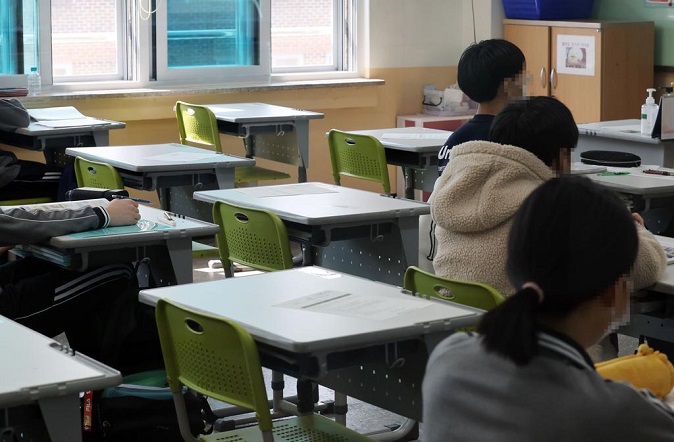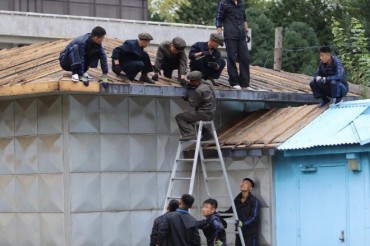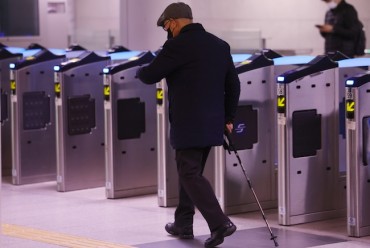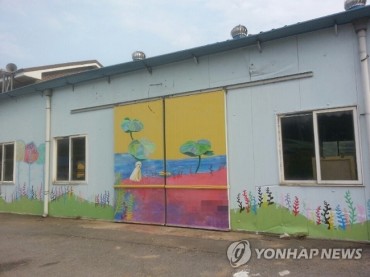
Desks remain empty in a classroom of a Seoul middle school on March 22, 2022, as an increasingly number of students are infected with the coronavirus. (Yonhap)
SEOUL, March 24 (Korea Bizwire) — South Korea reported nearly 400,000 new cases and record high deaths Thursday as the omicron variant is tightening its grip on the country, sickening nearly 20 percent of the 52 million population.
The country reported 395,598 new infections as of midnight, raising the total caseload to 10,822,836, the Korea Disease Control and Prevention Agency (KDCA) said.
While the daily tally was a sharp drop from the previous day’s 490,881, which was the second-highest daily caseload, deaths hit a new record of 470. The total deaths from COVID-19 came to 13,902, and the fatality rate came to 0.13 percent, the KDCA said.
As of 9 p.m., the country had added 328,909 new COVID-19 cases, down 51,368 from the same time the previous day, according to health authorities and city governments.
Daily cases are counted until midnight and announced the following morning.
Given a time lag of 2-3 weeks between rises in COVID-19 cases and deaths, deaths could begin to climb to as many as 1,000 a day, experts warned.
“Basically I expect to see 500-600 deaths a day for the coming 2-3 weeks, with the possibility of peaking at 1,000 deaths at any day,” said Eom Joong-sik, a professor at Gachon University Gil Hospital in Incheon.
Kim Woo-joo, a professor and an infectious disease expert at Korea University in Seoul, estimated the true death toll from COVID-19 could be 2-3 times the official tally.
But the government said a rise in deaths appeared to be linked to the underlying health problems COVID-19 patients had suffered from.
“The fatality rate remained low at 0.13 percent, and the growth rate of severe and critical cases has slowed relative to an overall rise in infections,” Son Young-rae, spokesperson for the Ministry of Health and Welfare, said at a daily coronavirus briefing Thursday.
The number of critically ill patients stood at 1,081, down three from the previous day.
The KDCA predicted critical cases could rise to 2,000 within one or two weeks, but predictions by medical experts put the tally much higher in the range of 2,500-2,700.
South Korea is experiencing the worst wave of the pandemic, surpassing the grim milestone of 10 million infections earlier this week. Nearly 9 million cases have been reported since early February.
The daily caseload surged to an all-time high of 621,205 last Thursday.

People line up to get a COVID-19 test at a local respiratory clinic in Seoul on March 24, 2022. (Yonhap)
The spread of the virus is feared to continue unabated amid relaxed social distancing rules. Earlier this week, the government eased some of its virus-related regulations to support retail and service sectors bearing the brunt of the pandemic’s financial impact.
Health authorities warned the “stealth omicron” could continue to fuel a surge in infections despite earlier projections that the current wave could soon peak. The subvariant is known to be more transmissible than the omicron variant.
Amid rapid outbreaks among young children, the government has rolled out a vaccination program for children aged 5-11. Parents can make a reservation for a COVID-19 shot starting Thursday and vaccinations will begin next Thursday nationwide.
South Korea is experiencing higher infection rates among young children than among adults.
As of March 10, the infection rate among children aged 5-11 was 22,000 per 100,000 people compared with 12,000 for adults aged 18-49.
Health authorities asked parents to get their children vaccinated, especially if the kids have underlying health issues, citing 20 critical cases and four death cases among the age group.
The country started to vaccinate teenagers aged 12-17 on Monday.
Also, an additional 44,000 doses of Pfizer’s antiviral pills, Paxlovid, are set to arrive in the country Friday morning. The pills have been administered to some 100,000 patients so far.
MSD’s drug Lagevrio, the second oral pill to be used to treat COVID-19 in South Korea, will start to be administered to patients Saturday.
The hospital bed occupancy rate for seriously ill COVID-19 patients came to 64.6 percent Thursday. The rate still remains manageable within the country’s medical response capacity, according to the KDCA.
The number of people receiving at-home treatment stood at 1,873,582, up 408,031 from the previous day.
Of the domestic cases, Seoul reported 77,768 new infections, with the surrounding Gyeonggi Province logging 107,472. The western port city of Incheon reported 24,689.
As of midnight Monday, 32.48 million people out of the total population, or 63.3 percent, had received booster shots. Fully vaccinated people came to 44.46 million, representing 86.6 percent, the KDCA said.
(Yonhap)






